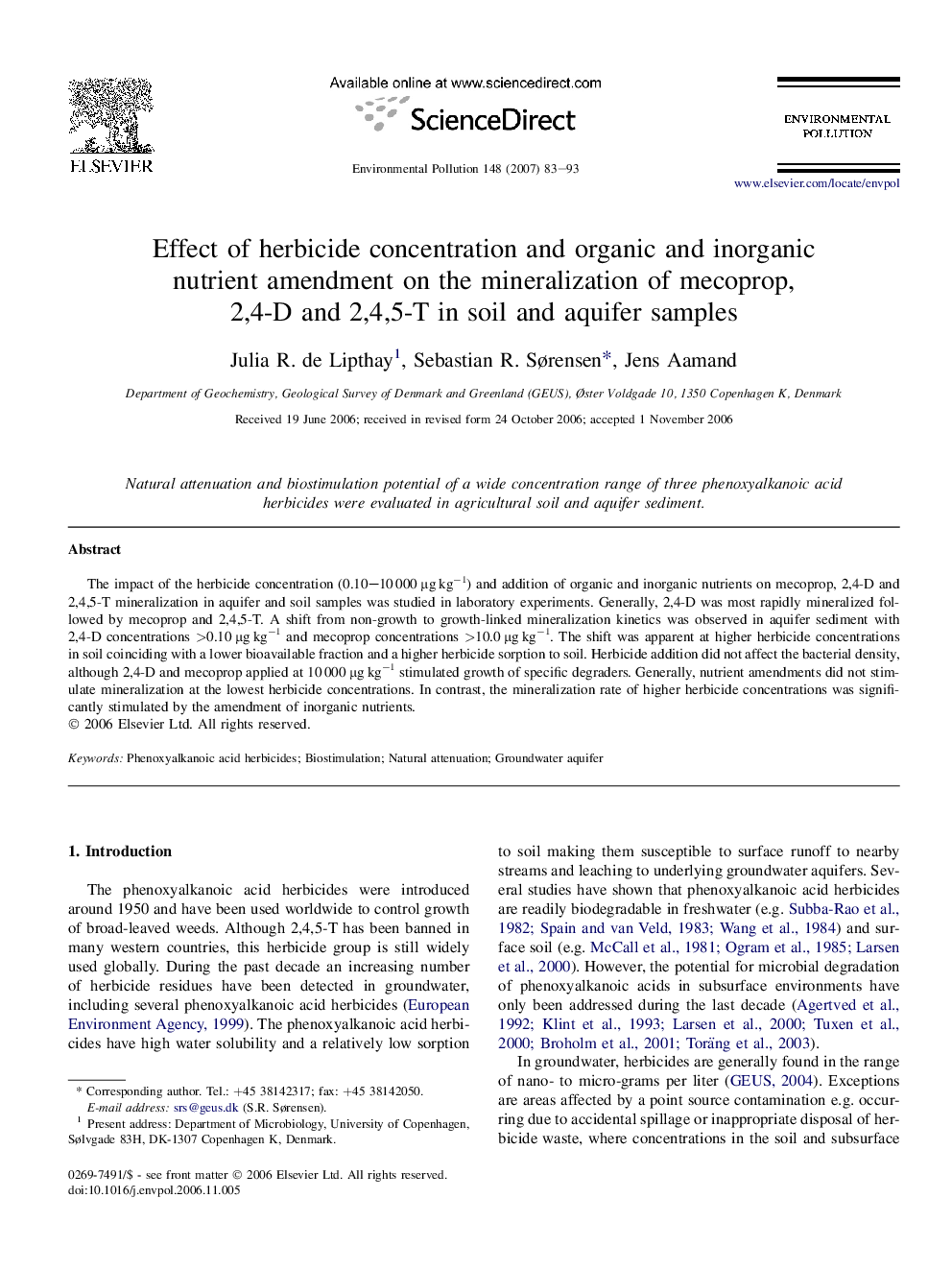| Article ID | Journal | Published Year | Pages | File Type |
|---|---|---|---|---|
| 4427563 | Environmental Pollution | 2007 | 11 Pages |
The impact of the herbicide concentration (0.10–10 000 μg kg−1) and addition of organic and inorganic nutrients on mecoprop, 2,4-D and 2,4,5-T mineralization in aquifer and soil samples was studied in laboratory experiments. Generally, 2,4-D was most rapidly mineralized followed by mecoprop and 2,4,5-T. A shift from non-growth to growth-linked mineralization kinetics was observed in aquifer sediment with 2,4-D concentrations >0.10 μg kg−1 and mecoprop concentrations >10.0 μg kg−1. The shift was apparent at higher herbicide concentrations in soil coinciding with a lower bioavailable fraction and a higher herbicide sorption to soil. Herbicide addition did not affect the bacterial density, although 2,4-D and mecoprop applied at 10 000 μg kg−1 stimulated growth of specific degraders. Generally, nutrient amendments did not stimulate mineralization at the lowest herbicide concentrations. In contrast, the mineralization rate of higher herbicide concentrations was significantly stimulated by the amendment of inorganic nutrients.
